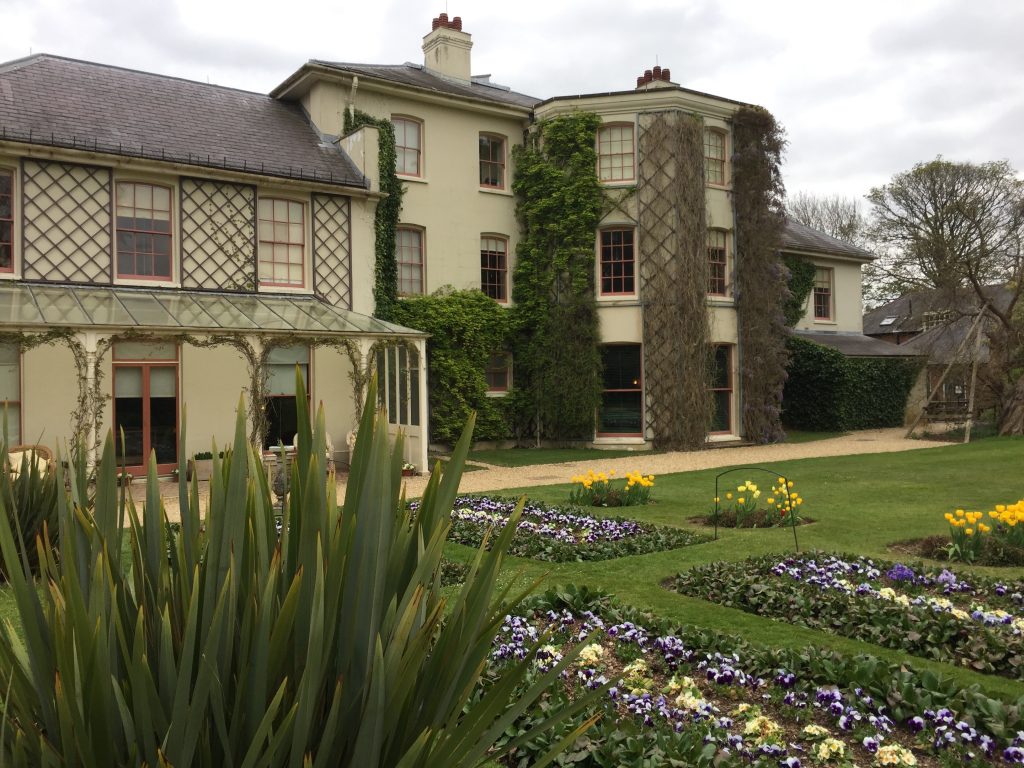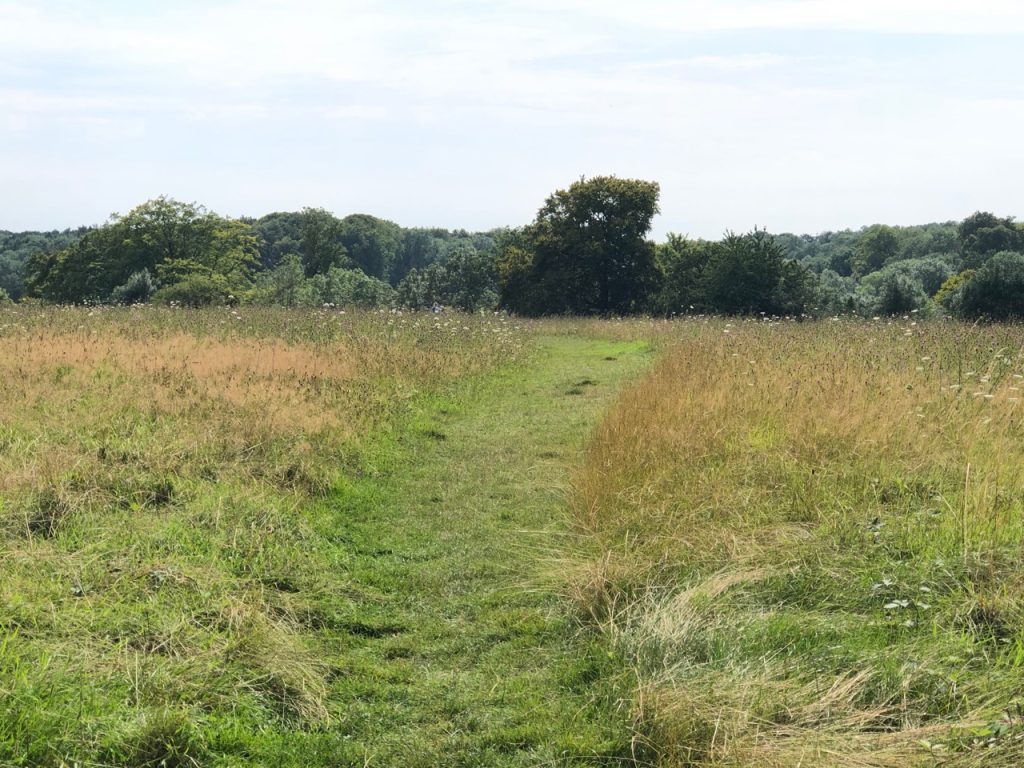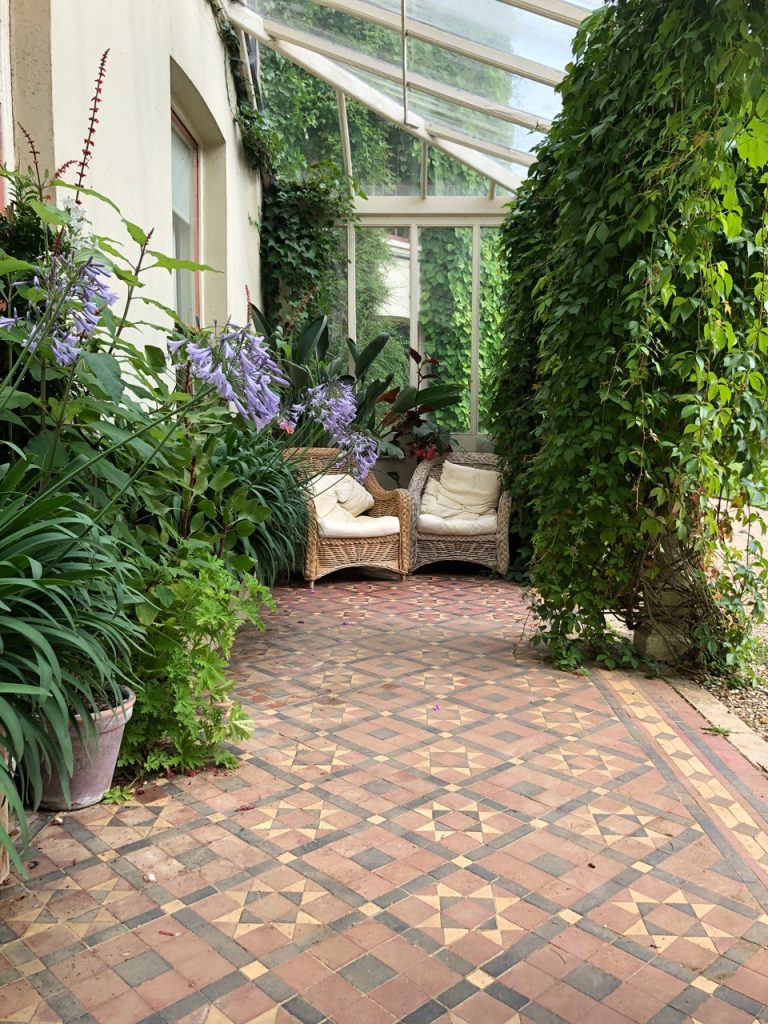Kent is known as the garden of England, so we thought we’d take a trip there to visit a few of them.

You really do get a sense and feel for Charles Darwin when you visit his home at Down House, now run by English Heritage and located just south east of London in the village of Downe, Kent.
It was here that Darwin carried out most of his research, did his thinking and wrote his famous Origins of the Species that set out his theory of evolution.
You certainly learn a lot about Darwin there.
Even if you don’t have the slightest interest in the man himself, it’s still an enjoyable day out.
The gardens are great. They aren’t grand or breath-taking. They are just delightful because they offer so much and convey to the modern visitor what a Victorian garden was like. There’s a magnificent mulberry tree next to the house itself which Darwin’s children used to climb, some beautiful perennial borders, and a picturesque walled orchard which today serves as a lovely picnic area.
The team and volunteers at Down have also recreated a Victorian kitchen garden, using vegetable varieties that are rarely found today but would have been popular at the time.
There’s a wonderful sweeping lawn and a picture-perfect summer meadow behind it. You can also stroll along the famous sand walk, which Darwin himself used to do twice daily to help him relax and collect his thoughts. You can also visit his famous green house in which he conducted many of his experiments and observations.
There’s a wonderful sweeping lawn and a picture-perfect summer meadow behind it. You can also stroll along the famous sand walk, which Darwin himself used to do twice daily to help him relax and collect his thoughts. You can also visit his famous green house in which he conducted many of his experiments and observations.

The garden at Sissinghurst Castle is – quite rightly – one of the most famous gardens in England.
It was created by Vita Sackville West and her husband Harold Nicolson in the 1930’s who transformed the 400 acre estate into a spectacular environment.
You can’t pigeonhole the gardens. When you first arrive and walk through the quintessential walled garden next to the main house, you think this is going to be a really traditional garden.
But as you explore further you realise that there’s so much more on offer.
Each section of the garden has been carefully thought through and offers contrast and a different experience. This is partly because each section or ‘room’ has its own dedicated gardener.

Great Dixter House and Gardens
Not many journalists get the chance to carry out their convictions and beliefs.
One who did was Christopher Lloyd, The Observer’s famed gardening writer.
He inherited Great Dixter House and Gardens from his father and created what many believe to be the best garden in England.
We did not really know what to expect when we visited. Great Dixter is still privately owned. Although Christopher Lloyd has died, family members still live there.
The gardens are quite incredible.
It’s not the size, or any particular section that stand out. It’s the contrast they offer.
As you walk through the different parts and sections you are constantly surprised by what you see and experience.
Where’s it’s the borders, the ponds, the meadow area or the tropical garden you are amazed by how Lloyd put together flowers and plants to create a unique feel which is both spectacular and totally in keeping the local environment at the same time.


You can see what attracted Derek Jarman to Dungeness.
Apparently he was visiting the area researching film sets and was immediately impressed by the unique dessert landscape and ‘end of the earth’ feel that this far end of Romney Marsh gives you.
Together with the sea and the unsettling sight of a large nuclear power station sited there Dungeness is very cinematic. It feels like a film set.
When Jarman saw Prospect Cottage – an old fishermans cottage – for sale he immediately decided to buy it.
He then meticulously set about creating a dry garden that combined his artistic ideas and the natural environment.
The garden has gone down in folklore as Jarman documented its creation in journals and diaries.
Jarman, of course died almost thirty years ago. Even so, people still pay homage to him and his garden.
It’s not fenced off. You can walk around and through it, and it’s no longer in the immaculate state it was when Jarman created it, but it does give you a special and unique vibe and feeling.
This is a garden with a very individual feel. It’s quirky and is completely in step with the slightly surreal and unusual landscape of Dungeness.



